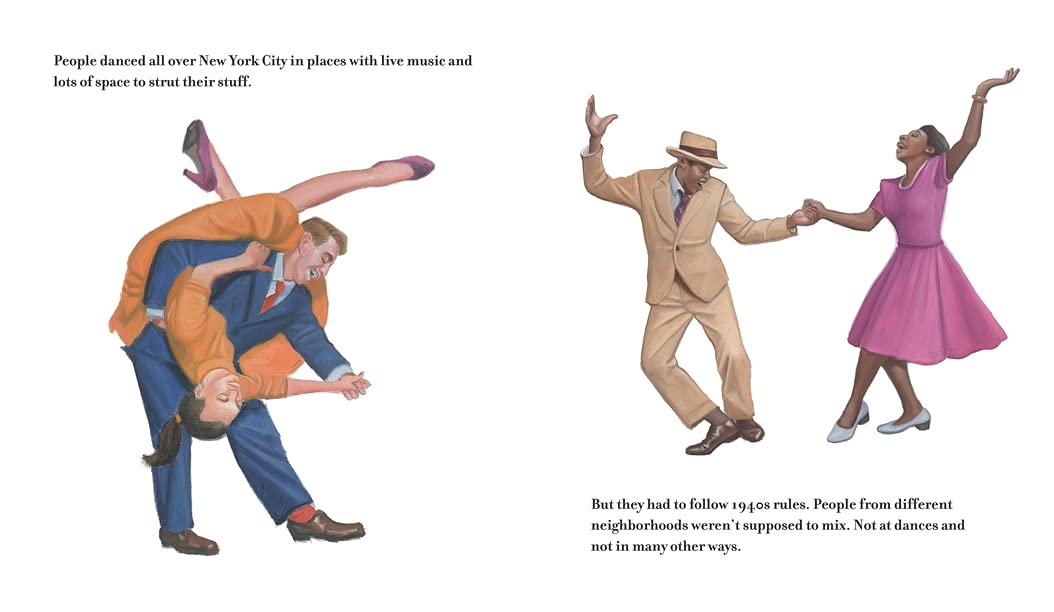Published by Candlewick
Summary: The first few wordless pages show a family leaving their homeland with rainbow-colored suitcases. In their new home, the girl opens one of the suitcases and leafs through a photo album. The pictures depict different types of love, expressed through eleven Arabic words. Each is described with a rhyming couplet: “There’s sunshine-warm friendship that glows and grows after two people meet (al-Wud)/And love that comes like a sudden breeze, sweeping you off your feet (al-Hawa).” In between, the refrain is repeated, “There are eleven words for love, and my family knows them all,” with the last page reading, “There are eleven words for love, and I love that my family knows them all.” 40 pages; ages 5-9.
Pros: Warm, colorful illustrations illuminate this celebration of love in its many forms of a Palestinian family that has fled home to start life in a new place.
Cons: I wish there had been some context notes either at the beginning or the end. The only reason I know this is a Palestinian family is from reading reviews.























